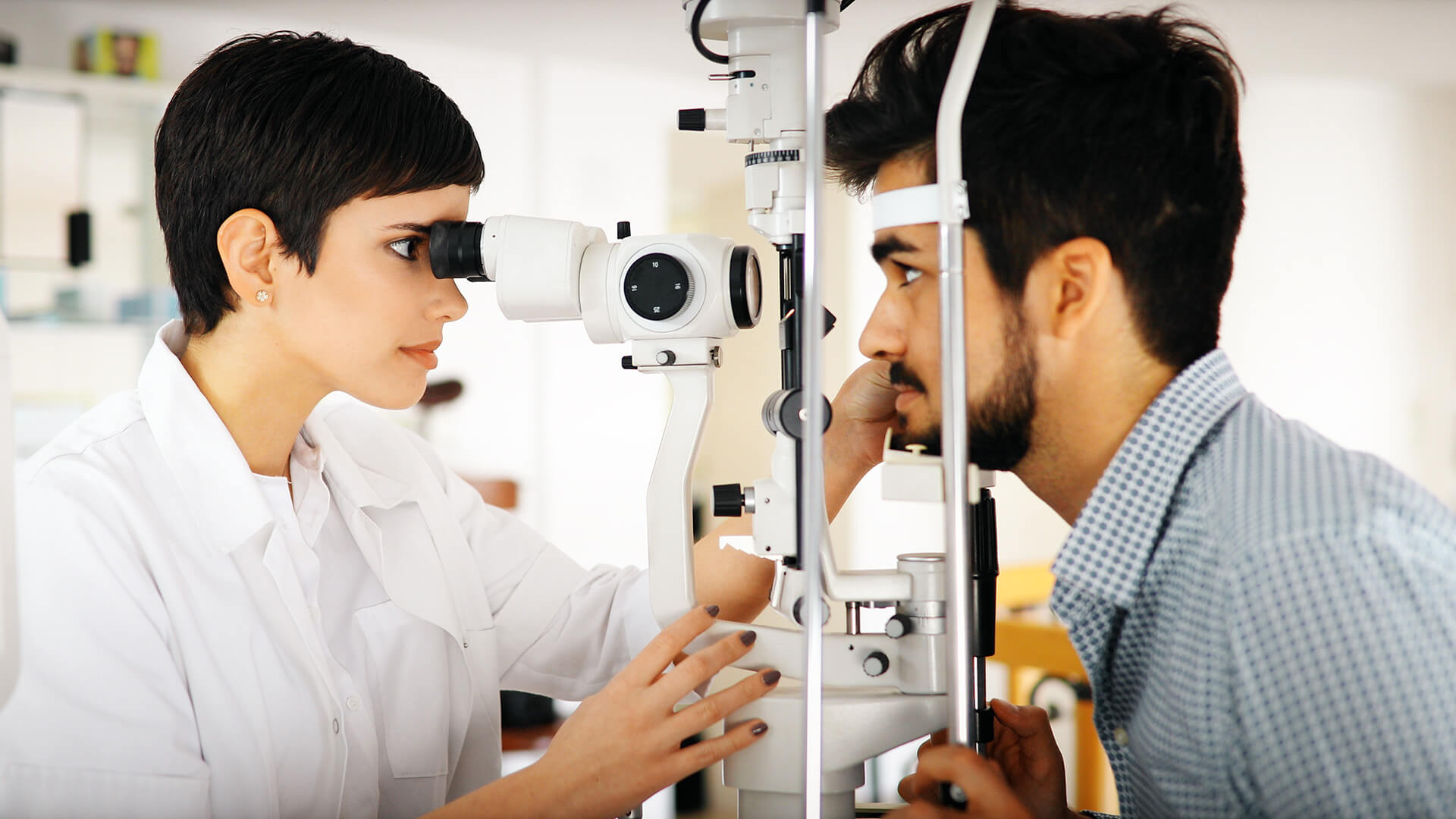Are you 40? Time to get an eye check-up done — just to rule out the third-most common cause of blindness.

Representational image of eye check up at a hospital. To detect Glycoma Opthalmologists say it is important to screen your eyes once a year after 40 years of age.
Are you above the age of 40 years? Have you got your eyes tested for glaucoma – globally the most common cause of irreversible blindness that begins mostly from this age?
In a week that had World Sight Day on Thursday, 13 October, it won’t perhaps be too out of place to remember that.
After all, say ophthalmologists, not only is it the third-most common cause of blindness, it is more common among people aged 40 years and more.
“Glaucoma is known as ‘the ‘Sneak Thief of Sight’ because blindness happens without the patient’s awareness,” says Dr Amod Nayak, Head of Clinical Services, Dr Agarwal’s Eye Hospital in Bengaluru.
“It is the leading cause of irreversible blindness in the world.”
Dr Nayak’s advice to us: It is very important to screen for glaucoma.
The National Eye Institute of the US defines glaucoma as “a group of eye diseases” that can cause vision loss and blindness by damaging the optic nerve located in the back of the eye.
“The symptoms can start so slowly that you may not notice them,” it says.
Dr Ramanjit Sihota, head of Glaucoma Services at New Delhi’s Shroff Eye Centre, describes it as a “condition”.
The condition gets worse over time and is often linked to a build-up of pressure inside the eye, Dr Sihota explained at a recent webinar organised by the Irish pharma company Allergan.
It is this increased pressure, called intraocular pressure, that damages the optic nerve, he said.
“If the damage worsens, glaucoma can cause permanent vision loss or even total blindness within a few years,” Dr Sihota said.
Ophthalmologists South First spoke to explain that the two most common types of the condition are the primary open-angle glaucoma (POAG), which develops slowly over time, and the angle closure glaucoma (ACG), which is less common and tends to be more acute.
One may be at risk of glaucoma if they have a family history of glaucoma, said Dr N Veerabhadra Rao, ophthalmologist and eye surgeon with Bangalore Eye Clinic in Bengaluru.
However, he said, secondary glaucoma can be caused in those who suffer from heart-related diseases such as such as thyroid, high blood pressure, diabetes, etc.
That apart, said Dr Sihota, even those who take steroid-containing medications, have high eye power or have had an injury or surgery of any kind should check their eyes regularly for glaucoma.
Bengaluru’s Dr Nayak Dr Amod explains that these days cows, buffaloes, and fruit plants are all injected with steroids at farms.
“We are noticing that even high consumption of milk and milk products and fruits can also put a person at the risk of glaucoma,” he said.
Anyone above 40 years must compulsorily get their eyes screened, say doctors.
According to Dr Veerabhadra, glaucoma can affect any age group though it is more common among people aged 40 years and more.
“While the primary glaucoma is usually genetic, the secondary reasons can start at the age of 40, so screening after that age is important,” he said.
Dr Rishi Jain, Medical Director, Allergan, does not specify any age group as such, but only advises that tests begin “early”.
“In India, the risk of loss of eyesight is high in chronic glaucoma cases and this can be prevented if it is diagnosed early,” Dr Jain said at the webinar.
Agreed Dr Nayak; in his view, there is a risk of eye sight loss in the case of chronic glaucoma, which can be taken care if diagnosed early.
The symptoms for glaucoma that one should watch out for, say ophthalmologists, are progressive loss of vision, frequent headaches, seeing coloured halos of light around the eyes, feeling of pain and pressure around the eyeball, along with nausea and vomiting, and the need for a rapid change of glasses.
“Whenever a person is experiencing any of these symptoms, it is high time for him or her to visit an ophthalmologist,” said Dr Nayak.
Dr Sihota says though the condition was not reversible, doctors can attempt to stop the degeneration of the vision.
“It is important to screen at least once every year and ensure that the doctor checking is asked to look for glaucoma too,” he said.
“If detected after vision loss the condition can’t be reversed.”
What was problematic was a “shortage of trained eye care service providers”, Dr Jain said, arguing that this was a leading cause for the growing concern of vision loss.

May 18, 2024

May 17, 2024

May 17, 2024

May 17, 2024

May 17, 2024

May 16, 2024